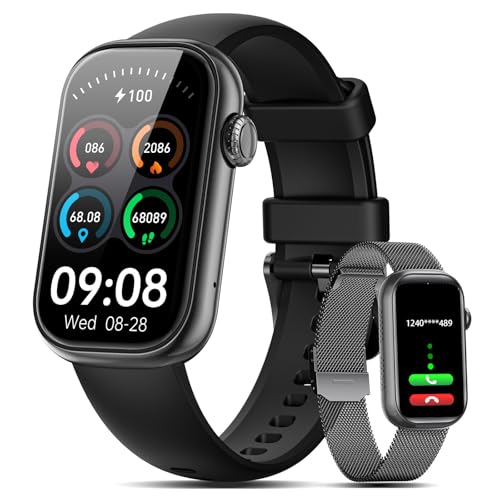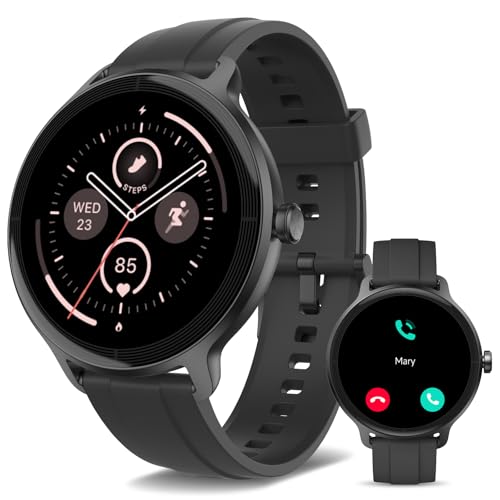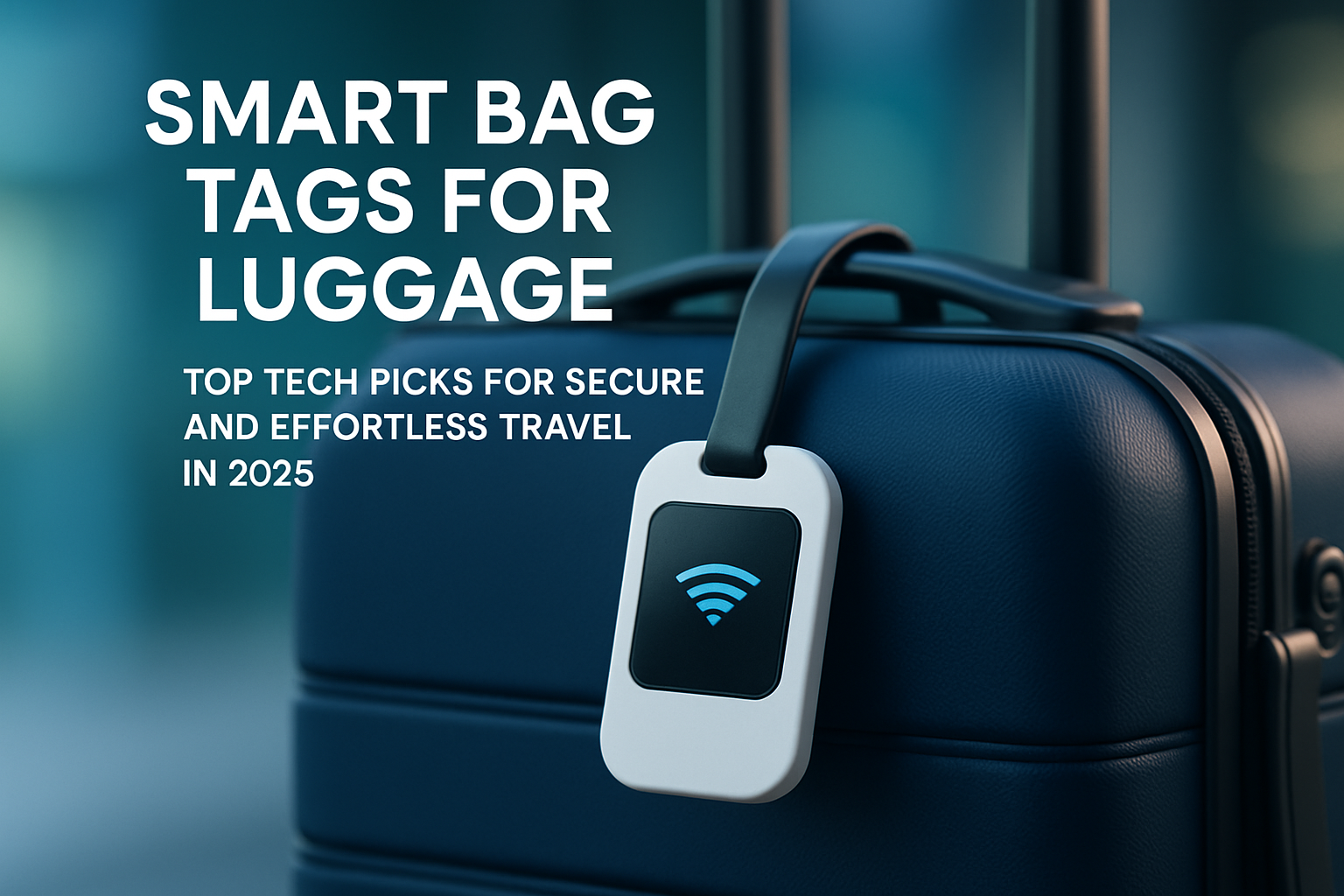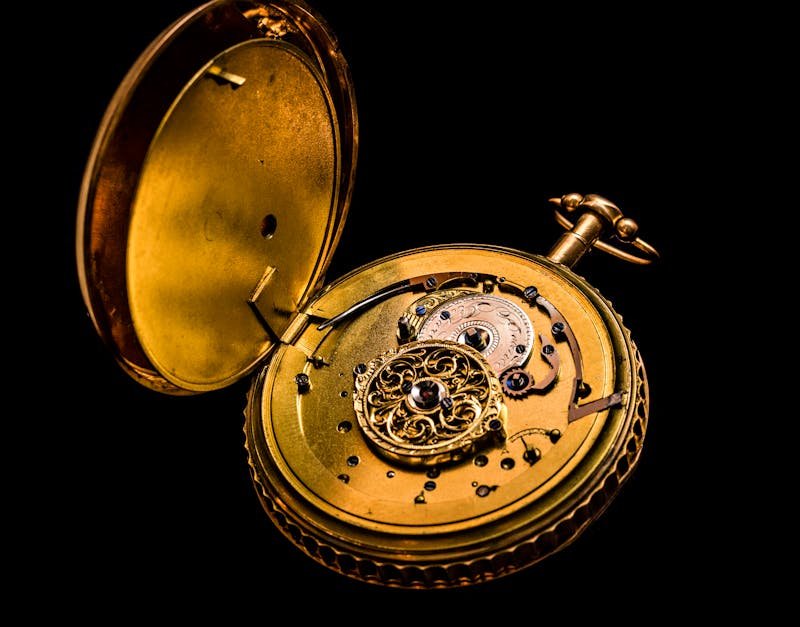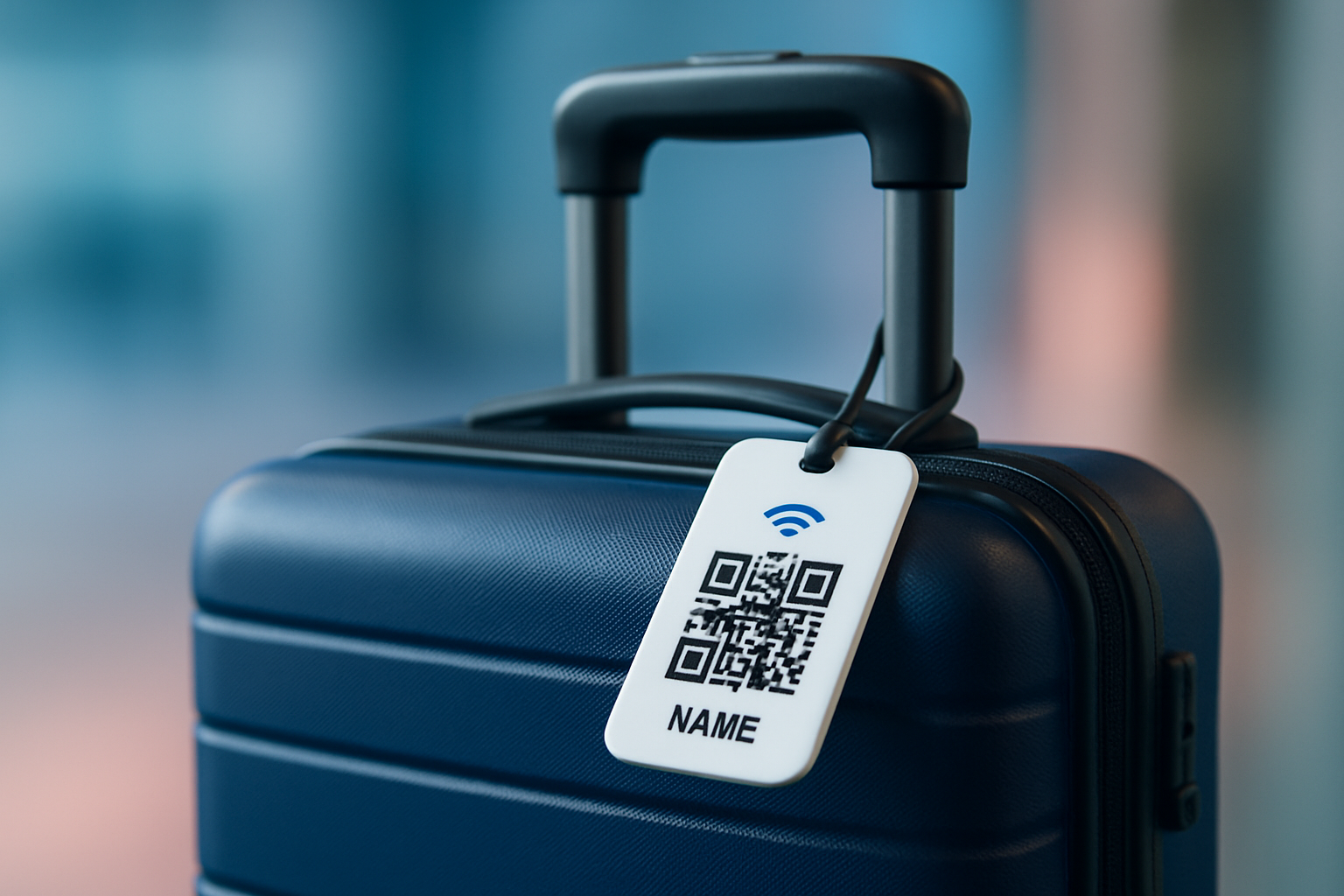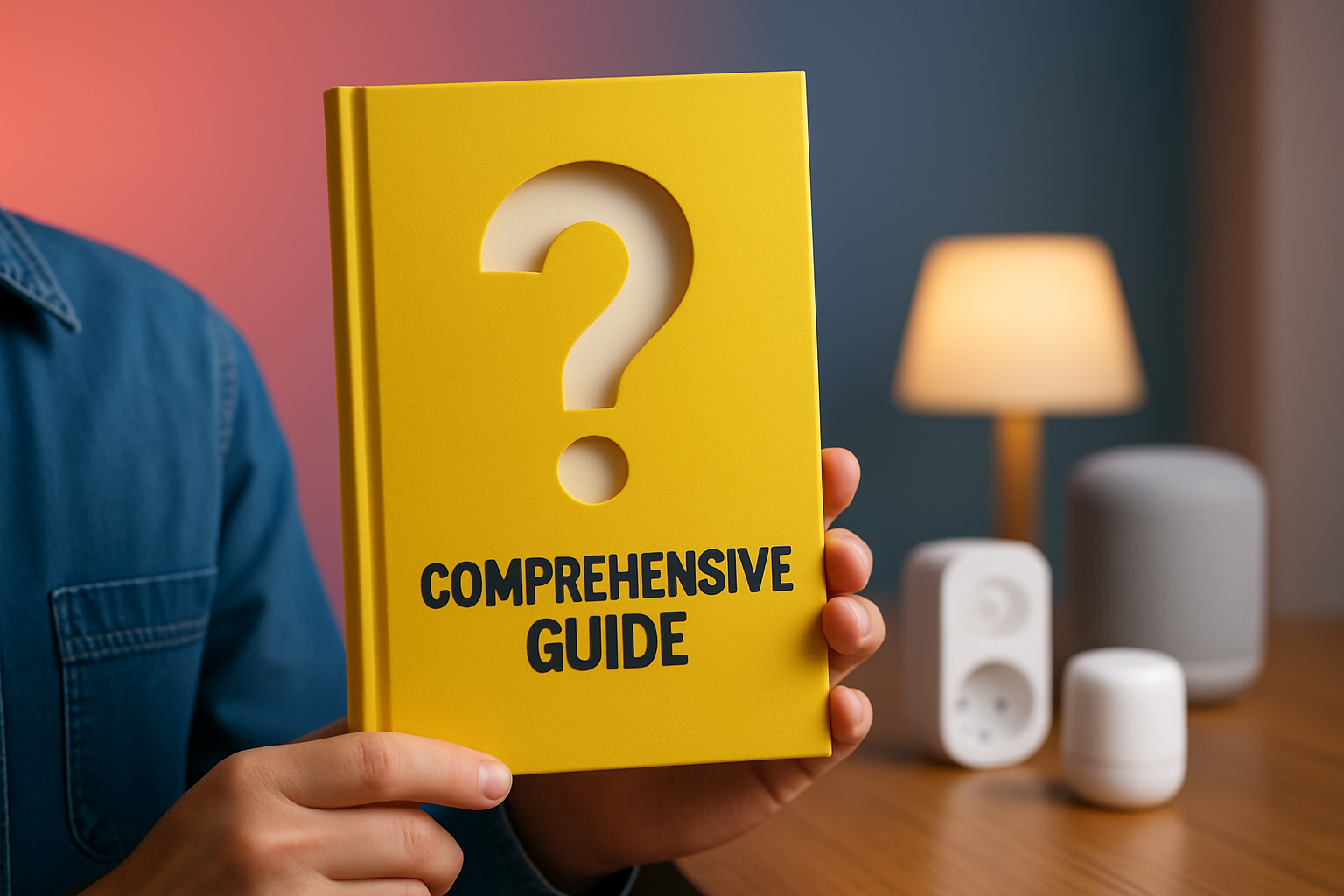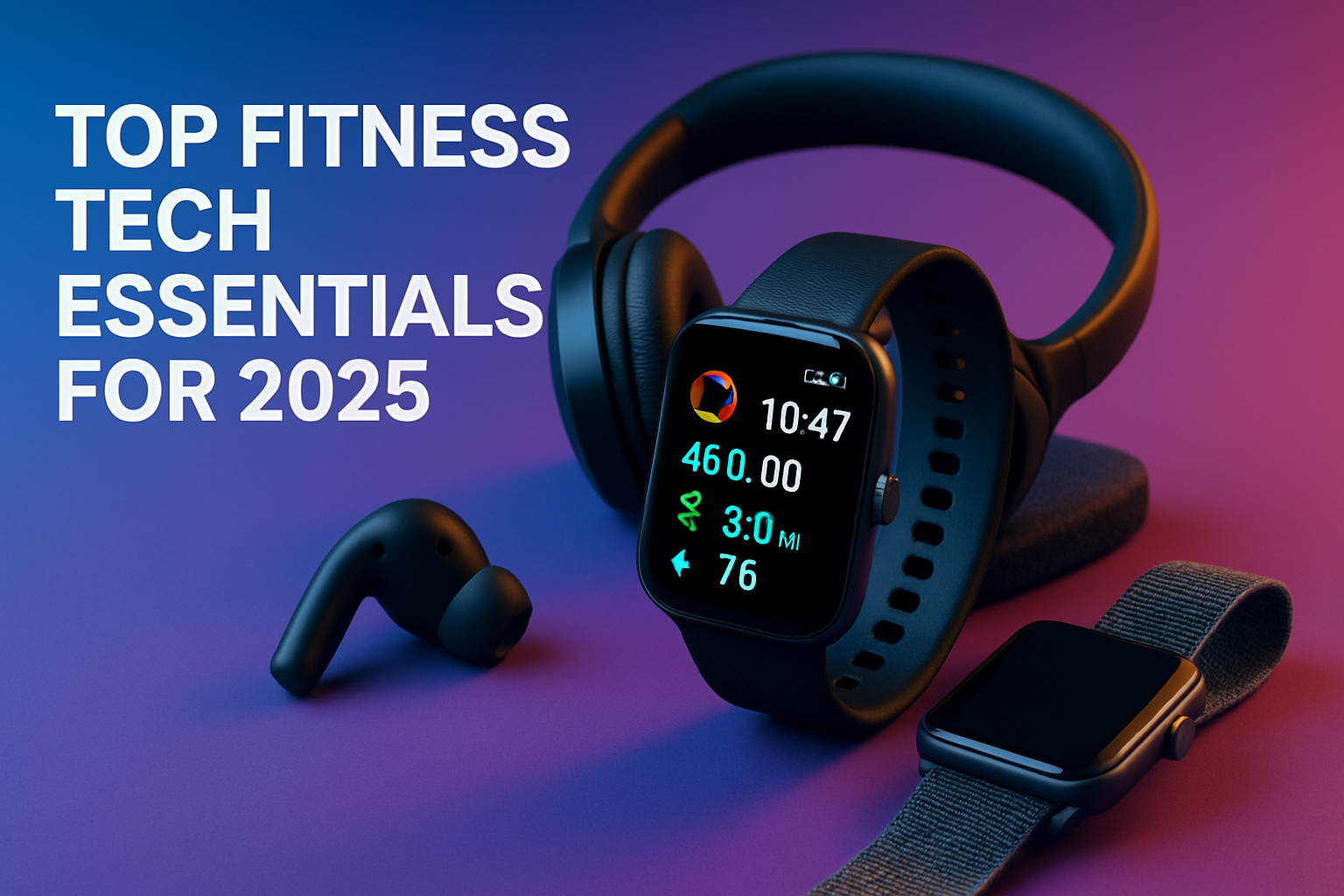Top 10 Wearables for Adults in 2025: Expert Reviews & Buying Guide
Wearables for adults have become everyday companions that quietly upgrade your fitness, safety, and productivity without demanding screen time. If you have ever wondered which devices truly make life easier rather than adding digital clutter, you are not alone. Industry analysts estimate that more than 560 million units shipped worldwide in 2024, and adoption is accelerating as sensors get smaller and smarter. Yet choice overload is real, and reading marketing claims can feel like decoding a foreign language.
That is where High Tech Reviews steps in. We translate specs into real-life benefits, spotlighting gadgets that solve daily problems for adults with busy schedules. In this guide, you will find expert insights, practical examples, and clear, friendly advice across fitness bands, smart rings, safety accessories, sleep solutions, and beyond. You will also see how to match features like GPS (Global Positioning System), ECG (electrocardiogram), and NFC (near field communication) to your goals without overspending.
As you read, imagine devices that fit your style like a favorite jacket, not a tech experiment. We will share how we test each category, what to expect day to day, and the subtle design choices that separate delightful tools from dusty drawer residents. Ready to meet the wearables worth your time in 2025?
Why Wearables Matter in 2025
Wearable technology is shifting from novelty to necessity as adults look for less intrusive ways to manage health, time, and travel. Compared with checking your phone, a quick glance at your wrist or a subtle vibration on a ring reduces distraction and preserves focus. That matters during a client meeting, an evening run, or a long flight where attentional bandwidth is limited. According to industry surveys, more than 70 percent of new buyers say long battery life and reliable health metrics are their top priorities, outranking entertainment features by a wide margin.
Design advances are driving this shift. Optical PPG (photoplethysmography) sensors now pair with skin temperature arrays and accelerometers to estimate sleep stages, stress patterns, and recovery readiness. When supported by ECG (electrocardiogram) spot checks and SpO2 (peripheral oxygen saturation) readings, the picture becomes more holistic. It is not a substitute for a clinician, but it is a powerful early-warning dashboard that helps you notice trends. As a result, adults are catching irregular sleep, adjusting training loads, and even nudging their daily step counts without chasing streaks or badges.
Convenience is expanding too. NFC (near field communication) lets you pay for a coffee without pulling out your phone. LTE (long-term evolution) options keep you connected on a run even if your handset stays at home. Meanwhile, discrete form factors such as smart rings and minimalist bands blend with business attire. If you value privacy, device-side processing and improved encryption are becoming standard, and more brands now offer granular controls to disable or delete data streams. Small features add up, and that is exactly what we evaluate at High Tech Reviews.
What Adults Should Know About Wearables Today
Before you buy, it helps to understand the key building blocks behind most wearables. Sensors do the heavy lifting: PPG (photoplethysmography) measures pulse via tiny LED (light emitting diode) lights, accelerometers track movement, and gyroscopes measure orientation. Higher-end devices add skin temperature, barometers, and occasional ECG (electrocardiogram) readings to assess heart rhythm. These inputs feed algorithms that estimate heart rate, HRV (heart rate variability), and VO2 max (maximal oxygen uptake) to guide training and recovery. While these metrics are estimates, the trend lines can be life changing when you consistently wear the device.
Battery life is a quality-of-life multiplier. If you forget to charge, you stop wearing the device. Many smartwatches deliver one to three days with always-on GPS (Global Positioning System) workouts trimming that total. Fitness bands and smart rings often last four to seven days, with some rings exceeding a week. If you travel frequently, prioritize quick-charge features and low-power modes. Water protection matters too. Look for ratings like IP68 (ingress protection 68) dust and water resistance or WR50 (water resistant 50 meters) when you plan to swim or run in the rain.
Privacy is another consideration. Choose devices that let you review, export, or delete your data and that clearly state whether information is processed on-device or in the cloud. If you do not want your location stored, ensure GPS (Global Positioning System) can be toggled off per workout. For comfort, test band materials and clasp designs, and consider sensitivities if you have metal allergies. Finally, think about your daily flow. Do you need LTE (long-term evolution) for phone-free runs, or will Wi-Fi (wireless fidelity) and Bluetooth (short-range radio) connectivity suffice? A little planning will help you buy the right tool once and enjoy it for years.
How High Tech Reviews Tests and Rates Each Device
Our mission at High Tech Reviews is to make high-tech choices simple and satisfying. Consumers often struggle to find reliable information and detailed reviews that match real-life needs, so we build our process around clarity and trust. Each device is worn for at least two weeks in varied scenarios: desk work, commuting, grocery runs, workouts, and travel days. We measure charging time, test comfort during sleep, and log notification behavior to see what interrupts and what helps. Our in-depth gadget reviews and comparisons are designed to feel like a friendly walkthrough rather than a lab report.
Health and fitness claims receive special attention. We compare resting heart rate trends from PPG (photoplethysmography) sensors against chest-strap references during steady efforts. We verify GPS (Global Positioning System) tracks on known routes and assess HRV (heart rate variability) and sleep staging for consistency over multiple nights. For usability, we evaluate screen legibility in bright sun, haptic strength, and voice assistant reliability over Wi-Fi (wireless fidelity) and LTE (long-term evolution). We also examine app design, data export options, and privacy toggles to ensure you remain in control of your information.
Finally, we score each product on value. Not every person needs ECG (electrocardiogram) or NFC (near field communication) payments, but everyone deserves durability, clear metrics, and a delightful experience. Our expert commentary highlights who will love the device, who might not, and how it fits into a smart home or travel kit. When we recommend a pick, it is because it earned a spot on our wrists, fingers, or frames in daily life, not just on a spec sheet.
Expert Reviews: 10 Must-Have Wearables for Adults
1. Everyday Smartwatch for Balanced Life and Work
If you want one device to streamline your day, an everyday smartwatch is the most versatile pick. Look for crisp OLED (organic light emitting diode) displays that stay readable in sun, robust GPS (Global Positioning System) for accurate runs, and reliable all-day PPG (photoplethysmography) heart rate tracking. The best models include NFC (near field communication) payments, fall detection, and optional LTE (long-term evolution) for phone-free errands. With 1 to 3 days of battery life, fast charging becomes essential so you can top up while showering or brewing coffee.
In our testing at High Tech Reviews, we favor watches that keep notifications tidy and configurable. You should be able to choose which apps can ping your wrist, set quiet hours, and review messages without fishing out your phone. Health features like ECG (electrocardiogram) spot checks and SpO2 (peripheral oxygen saturation) estimates add reassurance, but the daily value comes from subtle nudges to move, breathe, and sleep on time. If you juggle calendar invites, workouts, and family chats, this category fits seamlessly.
2. Fitness Tracker Band for Health Basics Done Right
A slim fitness tracker band delivers the basics with minimal fuss and a friendly price. Expect accurate step counts, dependable PPG (photoplethysmography) heart rate tracking, and sleep insights that highlight total time, awake periods, and estimated stages. Many bands now include guided breathing, stress scores based on HRV (heart rate variability), and cycle tracking for those who need it. Battery life typically lands between 5 and 7 days, which is ideal for forgetful chargers.
We recommend choosing a band with at least splash-ready water resistance such as IP68 (ingress protection 68) or a swim-ready rating if laps are your thing. A simple display and tactile button help in bright light and during sweaty workouts. Bands without LTE (long-term evolution) can still feel smart when paired over Bluetooth (short-range radio), showing calls and texts without overwhelming your attention. If you are seeking a nudge to walk more, hydrate, and wind down earlier, a solid tracker band earns its spot.
3. Smart Ring for Discreet 24/7 Readiness
Smart rings shine for adults who want deep insights without a screen on the wrist. Despite their tiny size, rings pack PPG (photoplethysmography) sensors, temperature tracking, and motion analytics that estimate recovery, readiness, and sleep quality. The form factor works beautifully with business attire and formal events, and most rings last 5 to 7 days per charge. Because there is no display, you will check progress in the app rather than glance in meetings.
During wear testing, we found smart rings particularly helpful for trend awareness. If travel disrupts your sleep, the ring’s readiness score flags the dip and suggests lighter training. If your resting heart rate climbs after a late dinner, you will see it the next morning. Comfort is crucial here. Request sizing kits, choose hypoallergenic coatings, and ensure the interior sensors sit snugly. If you value discretion and actionable recovery guidance, a smart ring is a refined solution.
4. Multisport GPS Watch for Outdoor Athletes
Runners, cyclists, hikers, and triathletes benefit from rugged multisport watches purpose-built for training. The big draw is robust GPS (Global Positioning System) performance, often with multi-band capabilities for urban canyons and dense forest. Add barometric altimeters for accurate ascent, long battery life measured in days, and structured workouts for intervals and zones. Many units estimate VO2 max (maximal oxygen uptake), training load, and recovery time to balance hard sessions with rest.
We prioritize clear mapping, crisp sunlight-readable displays, and glove-friendly buttons for winter training. Look for compatibility with external sensors via Bluetooth (short-range radio) or ANT+ (advanced and adaptive network technology), plus quick-release straps for swapping from track to office. If you love adventures, water ratings suited to open-water swims and a durable lens protect your investment. The best part is feeling confident that your watch will outlast a long trail day without babysitting the battery.
5. Smart Glasses for Subtle On-the-Go Assistance
Smart glasses have matured from lab demos into practical daily helpers. The most useful pairs place a small monochrome display in your periphery for turn-by-turn GPS (Global Positioning System) navigation, real-time translation, or glanceable notifications. Built-in microphones and speakers allow hands-free calls and voice assistants over Bluetooth (short-range radio) or Wi-Fi (wireless fidelity), and photo capture can document notes or receipts. Battery life typically covers a workday with intermittent use.
High Tech Reviews pays close attention to comfort, nose bridge fit, and lens options for prescriptions or blue-light filtering. Because the look matters, modern frames prioritize tasteful styling that reads as eyewear first, gadget second. For privacy, toggles that disable microphones or cameras are non-negotiable. If you present often, travel frequently, or prefer directions without staring at a phone, smart glasses are a quietly brilliant upgrade.
6. Health-Savvy Earbuds with Sound and Sensors
Earbuds are not only for music anymore. Premium sets now combine great audio with wellness features such as PPG (photoplethysmography) heart rate, skin temperature trends, and workout detection. ANC (active noise cancellation) helps on flights and in noisy offices, while transparency modes keep you aware on busy streets. With Bluetooth (short-range radio) multipoint, you can switch from laptop calls to phone podcasts smoothly.
Our testers focus on comfort during multi-hour wear, microphone clarity on calls, and stable readings during workouts. While ear-based PPG (photoplethysmography) can be accurate, it still benefits from a secure fit, so choose the right tips. Battery life with ANC (active noise cancellation) on should reach at least 5 hours per charge with a case that adds multiple top-ups. If you want fewer devices in your bag, health-savvy earbuds combine quality sound with useful insights.
7. Sleep-Tracking Headband for Nightly Insight
For many adults, better sleep is the highest-impact upgrade. A dedicated sleep headband uses sensors across the forehead to estimate sleep stages more directly than wrist-only devices. Some models offer gentle audio that nudges you toward deeper sleep or smart alarms that time wake-ups to lighter stages. The result is a richer picture of your nights and targeted suggestions that move the needle.
In testing, we log multiple weeks to see whether advice leads to durable habit changes. We also evaluate comfort for side sleepers and the reliability of overnight battery life. Headbands are not for everyone, but if sleep is your limiting factor, this wearable can be a secret weapon. Pair it with room-darkening curtains, a cool bedroom, and reduced evening screen time for a holistic plan that pays off.
8. Posture and Back Coach You Can Wear All Day
Hours at a desk can quietly strain your back and neck. A small posture coach worn between the shoulder blades or clipped to a shirt monitors tilt and slouch. When it detects prolonged misalignment, it vibrates to prompt a gentle reset. Over days, you build awareness and stronger ergonomics that carry into meetings and commutes.
We value devices that offer adjustable sensitivity and clear weekly progress charts. Privacy matters too, so choose options that process posture locally without recording audio. Battery life of several days and a low-profile design help you forget it is there until you need a nudge. If your goal is fewer aches and better energy by evening, this wearable earns its place in your routine.
9. Cuffless Blood Pressure Watch for At-Home Checks
Adults managing wellness may appreciate watches that estimate blood pressure using PPG (photoplethysmography) and motion analysis. These devices can support at-home awareness between clinic visits. Some offer guided calibration with a separate cuff to improve estimates, plus reminders to check at consistent times of day for trend accuracy. Paired with ECG (electrocardiogram) spot checks and SpO2 (peripheral oxygen saturation), you get a fuller cardiovascular snapshot.
It is important to remember that cuffless readings are indicative, not diagnostic. We encourage using them as a complement to validated devices and professional care. That said, our testers have found that consistent daily readings help users spot patterns tied to stress, salt intake, or sleep debt. If you want a proactive nudge toward heart health, a blood pressure watch can be a helpful ally.
10. Personal Safety Pendant for Travel and Late Nights
A lightweight safety wearable offers peace of mind during travel, evening commutes, or long runs. Worn as a pendant or clipped to clothing, it can send your live location via LTE (long-term evolution) or Bluetooth (short-range radio) relay, trigger a loud alarm, and share a prewritten message with trusted contacts. Some models also include fall detection, basic GPS (Global Positioning System) tracking, and a simple interface you can operate without looking.
We test these devices for reliability, especially in busy urban areas and indoor spaces where connections can falter. Battery life of several days and clear status lights reduce anxiety about whether it is active. If you frequently meet clients in unfamiliar neighborhoods or travel solo, a safety pendant is the kind of wearable you hope to never need yet feel better having.
Smart Buying Guide: Choose the Wearable That Fits Your Life
Start by writing your top three outcomes. Do you want fewer phone distractions, better 5K times, deeper sleep, or calmer days? Then map features to goals. For distraction control, prioritize smart notifications and LTE (long-term evolution) only if you truly need it. For training, look for accurate GPS (Global Positioning System), VO2 max (maximal oxygen uptake) estimates, and structured workout support. For sleep and recovery, rings or headbands with temperature and HRV (heart rate variability) shine. When in doubt, choose comfort and battery life first. A comfortable device with 5 to 7 days of power will be worn more consistently and produce better insights than a feature-rich gadget that lives on a charger.
To help you quickly scan your options, High Tech Reviews compiled an at-a-glance table that summarizes strengths and typical specs for the ten categories in this guide. Use it to shortlist two or three categories, then dive into our in-depth gadget reviews and expert commentary for the finer details like strap materials, app design, and long-term update support.
| Category | Standout Features | Typical Battery | Water Rating | Key Sensors | Best For |
|---|---|---|---|---|---|
| Everyday Smartwatch | OLED (organic light emitting diode) display, NFC (near field communication) pay, optional LTE (long-term evolution) | 1 to 3 days | WR50 (water resistant 50 meters) or IP68 (ingress protection 68) | PPG (photoplethysmography), GPS (Global Positioning System), ECG (electrocardiogram), SpO2 (peripheral oxygen saturation) | Balanced work-life use |
| Fitness Tracker Band | Slim design, guided breathing, stress/HRV (heart rate variability) | 5 to 7 days | IP68 (ingress protection 68) or swim-ready | PPG (photoplethysmography), accelerometer, skin temperature | Health basics and habit building |
| Smart Ring | Discreet form, readiness and recovery scoring | 5 to 7 days | Water resistant for handwashing/swimming | PPG (photoplethysmography), temperature, motion | 24/7 wear without a screen |
| Multisport GPS Watch | Multi-band GPS (Global Positioning System), training load, maps | 3 to 14 days depending on use | High WR (water resistant) for swim and rain | GPS (Global Positioning System), barometer, PPG (photoplethysmography) | Runners, cyclists, hikers |
| Smart Glasses | Heads-up info, voice control over Wi-Fi (wireless fidelity) and Bluetooth (short-range radio) | All-day intermittent | Splash resistant | Microphone array, gyroscope, ambient light | Navigation, notes, presentations |
| Health-Savvy Earbuds | ANC (active noise cancellation), PPG (photoplethysmography) heart rate | 5 to 8 hours per charge, case adds days | Sweat resistant | PPG (photoplethysmography), accelerometer | Calls, music, workouts |
| Sleep Headband | Sleep staging, smart alarm, audio coaching | Nightly use | Not water rated | EEG-inspired sensors, accelerometer | Improving sleep quality |
| Posture Coach | Vibration feedback, daily goals | Several days | Sweat resistant | Accelerometer, gyroscope | Desk workers, commuters |
| Blood Pressure Watch | Cuffless estimates, ECG (electrocardiogram) spot checks | 1 to 3 days | IP68 (ingress protection 68) typical | PPG (photoplethysmography), motion, SpO2 (peripheral oxygen saturation) | Heart health awareness |
| Safety Pendant | SOS, live location over LTE (long-term evolution) | Several days | Splash resistant | GPS (Global Positioning System), accelerometer | Travel, evening commutes |
As you narrow the field, consider a few practical questions:
- Will you wear it to sleep? If yes, favor 5 to 7 day battery life and soft materials.
- Do you need offline music or maps? Then prioritize storage and GPS (Global Positioning System) mapping on-device.
- Are contactless payments a must? Confirm NFC (near field communication) support and bank compatibility in your region.
- Do you want fewer subscriptions? Look for devices with robust free tiers and transparent pricing.
- Is accessibility important? Check for strong haptics, high-contrast modes, and voice control over Wi-Fi (wireless fidelity).
Remember, you are buying a habit, not a spec sheet. Comfort, low friction, and consistent insights beat one-off features every time. High Tech Reviews brings together comprehensive guides for smart home and fitness devices, plus curated selections of travel and lifestyle accessories, so you can spend less time researching and more time enjoying the results.
Care, Data Privacy, and Long-Term Tips
Great wearables get better with care. Clean sensors gently with a microfiber cloth after workouts, and rinse bands to remove sweat that can irritate skin. Charge before bed if you do not track sleep, or top up after waking if you do. For watch faces with OLED (organic light emitting diode), set adaptive brightness to preserve battery and reduce burn-in risk. If you swim often, verify water rating and rinse with fresh water after pool sessions to remove chlorine.
Data privacy is just as important. In the app, review which permissions are enabled and disable those you do not use, especially location when not needed. If your device supports on-device processing for features like voice or ECG (electrocardiogram) analysis, enable it. Regularly export your data for backups and delete test workouts to keep trends clean. For devices with LTE (long-term evolution), set clear rules for which notifications can break through and during what hours.
Finally, think about longevity. Choose wearables with replaceable bands, accessible batteries or efficient charging, and a proven record of software updates. Small accessories such as extra chargers for office and travel bags prevent gaps in use. When a device consistently supports your goals, stick with it. The compounding effect of tiny daily improvements across sleep, movement, and focus is where the real magic lives.
High Tech Reviews: Your Trusted Guide to Everyday Innovation
High Tech Reviews exists to solve a simple problem: consumers often struggle to find reliable information and detailed reviews to choose the most suitable high-tech gadgets and accessories that match their needs and lifestyle. Our solution is equally simple. We provide expert reviews, product highlights, and curated recommendations grounded in hands-on testing, so you can buy with confidence. You will find in-depth gadget reviews and comparisons for watches, bands, rings, and more, plus expert commentary on trending high-tech tools that actually fit adult lives.
Whether you are outfitting a smart home, building a travel kit, or leveling up your fitness routine, our comprehensive guides for smart home and fitness devices will meet you where you are. We pair clear explanations of technologies like GPS (Global Positioning System), NFC (near field communication), and HRV (heart rate variability) with real-world examples that show what changes day to day. We also curate a selection of travel and lifestyle accessories that complement your wearables, from compact chargers to carry-friendly cases, so your whole setup works together.
The result is time saved, money well spent, and tech that supports your best habits. That is the heart of what we publish, and why readers return when they are ready for the next upgrade.
Quick Case Studies from Our Readers
- After switching to a smart ring, a sales manager tracked recovery during a busy quarter and adjusted bedtime based on temperature and HRV (heart rate variability), reporting fewer afternoon slumps within two weeks.
- A new runner used a multisport GPS (Global Positioning System) watch’s structured workouts and VO2 max (maximal oxygen uptake) estimates to train three times a week, shaving 3 minutes off a 5K within two months.
- A frequent traveler paired health-savvy earbuds with ANC (active noise cancellation) to reduce fatigue on flights and used a safety pendant for evening walks near hotels, feeling more relaxed and focused.
FAQs: Straight Answers to Common Questions
Are wrist-based heart rate sensors accurate enough?
For steady-state activities, modern PPG (photoplethysmography) is typically reliable. High-intensity intervals may benefit from an external strap, but trends over time are solid and useful for most adults.
Do I need LTE (long-term evolution) on a watch?
Only if you want phone-free connectivity for calls, messages, or streaming. Many users do fine with Bluetooth (short-range radio) to a phone and Wi-Fi (wireless fidelity) for updates.
Will a wearable replace my doctor?
No. Devices provide helpful trends, early nudges, and context. They complement professional care and can encourage healthier habits between visits.
What is the best wearable for sleep?
Rings and headbands often provide richer sleep insights thanks to form factor and sensors. If you also want daytime notifications, a comfortable watch can still be a strong all-rounder.
How do I protect my data?
Use strong passcodes, review permissions, enable on-device processing when offered, and export and delete data you no longer need. Read privacy policies and choose brands with clear controls.
The Bottom Line
We promised friendly, expert guidance to pick 2025’s most useful wearables, and you now have the knowledge to match features to your life with confidence. In the next 12 months, expect even smaller sensors, smarter on-device AI (artificial intelligence), and longer battery life that makes charging feel like an afterthought. Which tiny upgrade will quietly change your days the most, and how will you measure its impact with the wearables you choose?
Ready to Take Your wearables to the Next Level?
At High Tech Reviews, we’re experts in wearables. We help businesses and consumers who often struggle to find reliable information and detailed reviews to choose the most suitable high-tech gadgets and accessories that match their needs and lifestyle. The website provides expert reviews, product highlights, and curated recommendations that help users make informed purchasing decisions and discover the best technology solutions.. Ready to take the next step?



